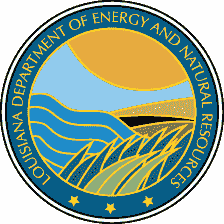Technology Assessment Division
Cogeneration in Louisiana
by Alan A. Troy, P.E.
The combination of Louisiana's flat electrical demand, generating overcapacity, and low cogeneration purchase prices makes it difficult to sell cogenerated power profitably to the state's electric utilities. This situation is unfavorable for additional cogeneration capacity intending to sell power to the grid. Unless the near term demand for electricity increases enough to create a need for new capacity, it could very well be the 21st century before new projects can be justified.
For the past several years cogeneration activity in Louisiana has mirrored the state's generally stagnant economy. Cogeneration purchases peaked in 1987, but since then have fallen 21% despite an increase in the number of cogenerators from 9 to 14 and an 11% increase in total net generation by the utilities (See graph on back). Since 1988 the utilities' load growth has been negligible, and the price of cogenerated power has declined nearly 10%. The annual average price paid by Louisiana utilities for cogenerated power has declined nearly 36% since 1985.
In 1991 both cogeneration sales and the annual average price received by Louisiana cogenerators declined 9% as compared to 1990 while net electricity generation by all Louisiana generating sources fell slightly more than 1%. These sources include the state's publicly and investor-owned electric utilities and non-utility generators. The electric utilities provided 98% of total net generation in the state (See pie chart on back).
Cogenerated power is purchased exclusively by the five investor-owned electric utilities that serve the state. Together they generate almost 83% of the power to the state grid. About 93% of cogeneration power purchases are from Louisiana cogenerators and the rest from Texas cogenerators. GSU and Southwestern Electric Power Company (SWEPCO) purchase Texas cogenerated power because the service territories of both utilities include portions of Texas as well as Louisiana.
No new cogeneration projects were announced or began operation in 1991. Two Louisiana projects went on-line in 1990. They were the 84 megawatt (MW) Exxon Chemical project and the 90 MW Formosa Plastics project. Gulf States Utilities (GSU) is the purchasing utility. Formosa did not actually sell power to GSU until 1991. These additions raised the total installed Louisiana cogeneration generating capacity to 1421 MW.
Unless a potential cogenerator has a year-round use for steam and can use all the power generated too, there is little economic incentive to develop new cogeneration projects in Louisiana. The utilities presently have a capacity surplus and do not project a need for new capacity until the 21st century. Because of this excess capacity the Louisiana Public Service Commission has ruled that the price the utilities are required to pay for cogenerated power is only the price of the fuel it avoids using by not generating the power itself. This is not enough to spur new cogeneration projects designed to sell power to the utilities.
The above information was obtained from DENR's October 1992 Cogeneration in Louisiana report, which is now available. The 53-page report is primarily a compilation of tabulated data and graphs pertaining to industrial cogeneration power sales to Louisiana electric utilities for the period 1985-1991. A statistical overview of the generating aspects of the entire Louisiana electric power industry is also included.
